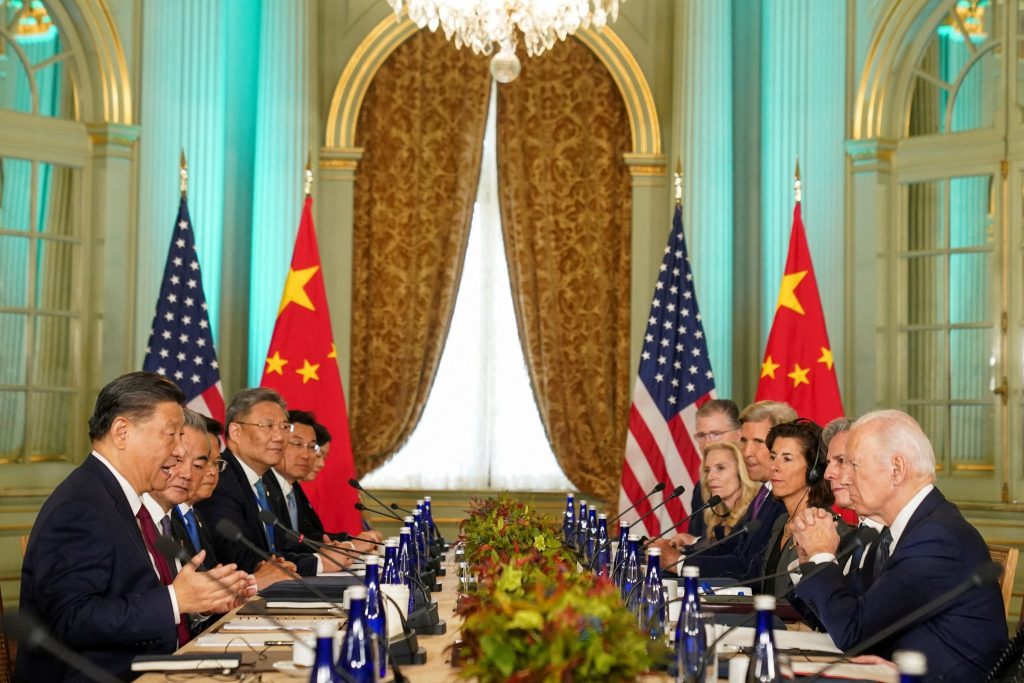First the good news — Washington and Beijing are talking again. In 2023, both capitals came to accept the reality that the deterioration of relations that had carried over from the Trump years through much of the first Biden term was unsustainable.
At the start of 2024 there’s a sense that, in the short run, bilateral relations are more functional than a year earlier. But those with an eye on the structural problems afflicting the relationship will still recognise that the United States’ Asia policy is increasingly guided by competition with China. Asia will have to take the initiative to build a regional system in which China has a — but not the — leadership position, and to do so without the expectation of a constructive US role for some years.
In this week’s lead article, Ryan Hass argues that 2023 was a ‘strong year for US foreign policy in Asia’ marked by an arrest in the downward spiral of US–China relations, as well as the deepening and broadening of US ties with allies and those charting a path between US–China competition in Asia.
As Hass writes, ‘the United States found firmer footing in its relations with China’ over the year. ‘After a tumultuous first half of 2023, Washington and Beijing reopened diplomatic channels and coordinated productive leader-level engagement’, with the Biden–Xi meeting at the G20 in 2022 being followed up with the bilateral face-to-face on the sidelines of the 2023 APEC meeting in San Francisco. In their meetings, ‘Biden and Xi reaffirmed their mutual interest in managing tensions and limiting the risk of escalating tensions. Both militaries recommenced high-level communication’, too, and US Secretary of State Anthony Blinken met his Chinese counterpart twice.
The upcoming US elections puts a hard political limit around what can be done from the US side towards going from stabilisation to the negotiation of a new modus vivendi that works for Asia. But the political problems go deeper, writes Hass, amid the ‘unresolved debate inside the United States about its role in the world’ as ‘[t]he US public is flirting with another periodic bout of isolationism’.
These trends will influence even the policy of a re-elected Biden administration, regardless of its relatively more internationalist ethos than the Trump-era Republican camp. The trends in the US are augmented by an inward, in parts paranoid, turn within China that inhibits its own dealings with the world — as well as internal political turmoil that saw both a foreign minister and defence minister abruptly disappear from public view in 2023.
In short, there is every reason to believe that the political problems afflicting this relationship are structural and abiding. These problems encompass the panicky response of the United States to the relative decline of its strategic power, the Xi-era pathologies of Chinese governance and the intense mistrust both parties have of each other. For at least two — possibly more — presidential terms, the political incentives within the United States all point to continued confrontation with China, or dis-engagement from Asia, both on the security-hawk right as well as from the centre and centre-left, where protectionism and industry policy have a renewed attraction.
Charting a future with the United States as a diminished economic patron and security guarantor is the key challenge for the region over this century. That was true even back when there was something approaching a bipartisan consensus on multilateralism and cooperative relations with China in Washington. It’s more urgent in a post-Trump era when the paper-thin commitment of many US elites to that consensus has been exposed. The United States will be worse than a bystander under a second Trump administration — it will return to a capricious, mercantilist approach to China, and actively sabotage the international system (the World Trade Organization, United Nations, the International Monetary Fund and World Bank, Asia-Pacific Economic Cooperation and every other international forum that matters), with even the Indo-Pacific Economic Framework (IPEF) a likely casualty.
Asia can find a better way, one based in its longstanding traditions of pragmatic understandings of national welfare, that some in the region propose synthesising into a new vision of comprehensive regional security attuned to the security benefits of economic interdependence and the growing importance of environmental and human security challenges.
A vision of this kind would supply the intellectual underpinnings of a renewed push towards a beefed up regional political–security architecture for Asia anchored in the existing ASEAN-centred institutions, or spun off from them. This could be a platform for the collective negotiation of norms of inter-state behaviour in a post-US primacy region, and the promotion of economic integration and political dialogue that in and of themselves provide guardrails against conflict.
That requires the region collectively to articulate and assert its interests to the great powers. This means telling the United States that the region has no interest in seeing the collapse of the WTO, or to fall on either side of an artificially bifurcated trade and investment system designed mainly to protect Western industries from competition with China.
It also means telling China that, while the region welcomes deeper trade and investment ties, and accepts a leadership role for China befitting its size and wealth, it also expects Beijing to play by a mutually-negotiated rulebook in which the economic coercion and grey-zone military tactics it has meted out to neighbours for some time now are not acceptable ways of resolving disputes.
The intellectual groundwork for such a vision is already underway — politicians in the region need to catch up.
The EAF Editorial Board is located in the Crawford School of Public Policy, College of Asia and the Pacific, The Australian National University.

